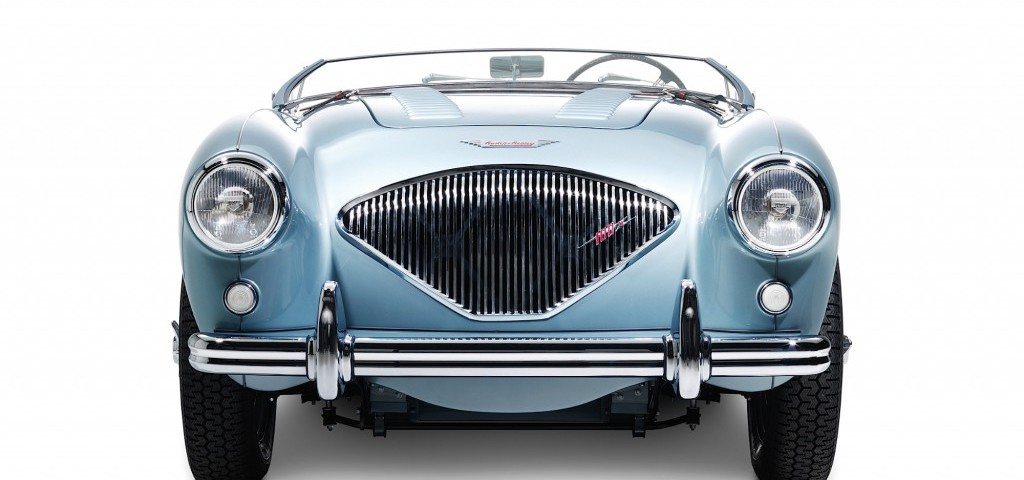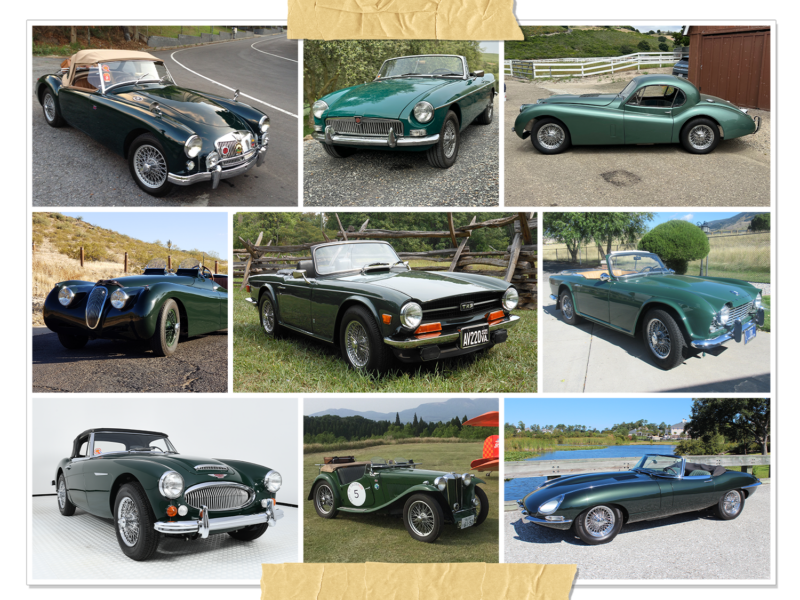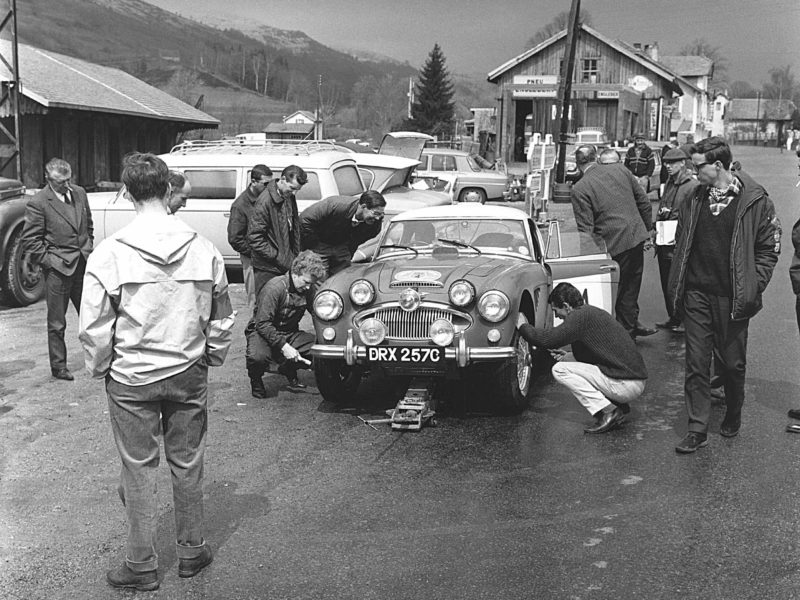Most automotive enthusiasts appreciate the innate differences between sports cars from America, France, Italy, Germany, Japan and the United Kingdom even if they are unable to articulate what makes them unique. Even the casual car guy can tell you that American muscle cars have large displacement engines; Italian engines make their power with lots of small cylinders with shorter strokes; German engines are technologically efficient; and the archetypical British sports car makes up for in torque what it lacks in horsepower.
In fact, if there is a common thread running through almost all of the Healeys, Triumphs, MGs and Jaguars it’s that torque is the sine qua non of the British sports car experience. This unifying characteristic separates your 3000 and TR3 from an Alfa-Romeo or Ferrari and ensures that our relatively agrarian British sports cars will always be fun shooting out of those decreasing radius turns or pulling away from the stoplight.
But why are British sports cars like this? Why can a Ferrari or Alfa-Romeo run at 7500 rpm while a Healey 100 hits its redline short of 5000 rpm? Does it have to do with the English bulldog spirit and the relative merits of horsepower versus torque? Is it because grunt is more fun than going fast in a straight line? Were British sports cars born this way or did they evolve to meet some unseen evolutionary challenge?
Actually, it boils down – like most things in life – to money; specifically, taxes.
The Royal Auto Club (RAC) horsepower formula was developed in 1910 at the request of the British government to determine how cars would be taxed. The RAC horsepower rating was derived – uniquely – from only the total piston area or what we know as the bore. To reduce the amount of taxes paid as a result of these calculations, British automobile manufacturers developed engines of a given capacity to have very long strokes with small piston surface areas.
These long stroke engines were big on torque but short (comparatively speaking) on horsepower. Without the restrictions on total piston area, the most efficient engine – and a more powerful one too – would possess both a larger bore and shorter stroke. Let’s compare two engines of the same displacement: one with a long stroke and small bore and the other with a large bore and a shorter stroke.
The first engine (long stroke and small bore) is less efficient than the latter (short stroke and large bore) on several fronts. The larger bore promotes better breathing due to reduced valve shrouding while the shorter stroke will also enable the engine to rev higher and suffer less from parasitic loss due to friction and windage.

2.0-Liter Columbo V12 engine produced 140 hp with a bore and stroke of 60mm x 58.8mm (almost half the stroke in the Healey 100’s A90 engine).
Does that mean that the agricultural engines in our British sports cars are bad? Not really, they’re just different. Due to an absence of any restrictions on engine size – or any displacement based taxes – in the United States, manufacturers were free to build increasingly larger engines that were understressed and could produce large amounts of smooth horsepower which led to the proliferation of big V8, V12 and even V16 engines in the 20s and 30s. In Germany and Italy, taxes were initially levied on total displacement so that builders there focused on extracting the maximum performance from as small an engine as possible – hence the development of their very small displacement but high-performance engines – until all restrictions were removed when the Fascists entered power in those countries.

The engine in the Healey 100 BN1 had an incredibly long stroke of 111.1mm and produced 90hp. Torque was a healthy 144lb/ft at 2500rpm.
The British government abandoned the tax horsepower system in 1947 – replacing it with a tax on total displacement – and then abandoned that system in favor of a flat tax in 1948. But the war had sapped the British auto industry and there was no money to develop new engines to take advantage of the new tax regime. Instead, the engines that were used in our Healeys, MGs and Triumphs could all trace their origins to engines developed under the original prewar taxation system which meant longer strokes and smaller bores.
That design element meant high torque and low redlines, but those qualities also imbued our cars with a unique character that was clearly distinct from their Continental and American rivals. It meant that our cars would always find success on the grueling rallies and hill climbs and play the tortoise during countless endurance races to the higher revving and faster hares – hoping to outlast them with their inherent reliability at the end of the long race.
Most of all, it made our cars fun to drive in a country where low speed limits reigned and there were few venues to reach triple-digit speeds. While other cars might outperform our Little British Cars on the super speedway, once the roads start to curve and hills rise in our way it becomes our time to shine. All things considered, I’m glad the way things worked out.
Notes: The RAC Horsepower formula and the attendant tax scheme was the reason so many types of similarly named models existed. The Austin 7 and Triumph 7 reflected the taxable horsepower. Similarly, the other numbers in use – like the Ford 10 – all reflected other tax classifications (Sevens, Eights, Nines, Tens, Elevens, etc.).
The inherent disadvantages of the long stroke engine are the reason that Donald Healey and others adopted the Weslake Patent Head to improve breathing and are why improved cylinder heads with larger valves are such a popular performance modification for our British sports cars.
By Johnny Oversteer











'Stroke Me – The Origin of the Species and the Evolution of British Sports Cars' have 10 comments
April 1, 2015 @ 10:10 pm Darrin Broderick
Bloody brilliant. I never thought about this before but you’re right. Torque is better than horsepower and this is why we have so much in our cars. Thanks for the engineering lesson too.
February 8, 2016 @ 11:23 am Wood
I think you’ve just captured the answer perfectly
April 2, 2015 @ 11:44 am John Oversteer
Almost every British sports car in the postwar period except for those powered by variations of the Coventry Climax used an undersquare engine design (perhaps that is why the Coventry Climax was such a popular racing application for its ability to sustain high revolutions) because most manufacturers had to make due with adapting prewar designs for modern usage.
April 2, 2015 @ 5:17 pm Dale
And then the “short stroke” Triumph Spitfire engine turned out to be quite a revver as well, doing something like 7300 rpm and 134 at Le Mans…
This didn’t stop Triumph from then STROKING the engine to 1500 ccs in 1973- the Brits just couldn’t stop themselves…
April 14, 2015 @ 10:22 am nikasj
Even the short stroke British sports car engines were usually undersquare but capable of greater revolutions than their longer stroke brethren. I have seen through the miracles of modern technology (and better metallurgy) Healey and Triumph engines that could live at 6500 rpm+. The mastery of Kastner, Richardson and others back in the day is that they achieved success with stock cranks and three-main bearings. All things considered, I still prefer torque to horsepower.
April 14, 2015 @ 12:17 pm John Oversteer
The characteristic torque that marks most of our British cars was a fortunate effect of the British taxation laws and the parsimony of the industry in the days following WW2. It has imbued these cars with a distinctive character that we’ve all come to enjoy and love.
April 28, 2015 @ 8:51 am Dave Howe
A “horsepower motor” is fun some of the time, but a “torque motor” is fun all the time!
April 28, 2015 @ 12:38 pm nikasj
I agree wholeheartedly that you buy horsepower but drive torque.
November 13, 2015 @ 11:25 pm Ron. Heyes
Our cars have a “small bore” and they are never “boring”. 🙂
January 12, 2018 @ 6:22 am phil coley
I live in rural georgia, , my 69 midget, loves the winding rolling hills of the piedmont section of the south. I love the way I can just stay in third gear most of the time and have that wonderful acelleration . I never knew why, but now I do, long stroke and smaller displacement, and the “sound” yeah man, I dont need no radio!